#Miletos
Text
youtube
#history#Greece#Ancient#Ancient Greece#Greek Town#Greek City#Greek Cities#Greek Towns#Agora#Bouletrerium#Gym#Gymnasium#Athens#Miletos#Notion#Hippodamus#Metroon#Tholos#Pnyx#Ecclesia#Hippodrome#Stadium#Ceramic#Parthenon#Bouleterium#Necropolis#Palaestra#Urban#Street#Road
0 notes
Text
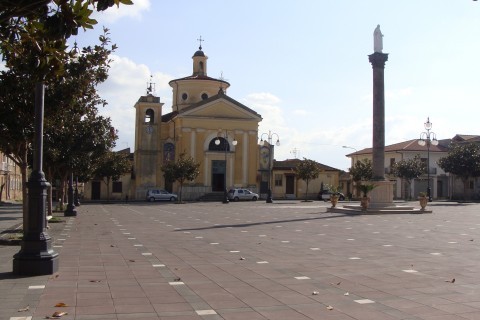
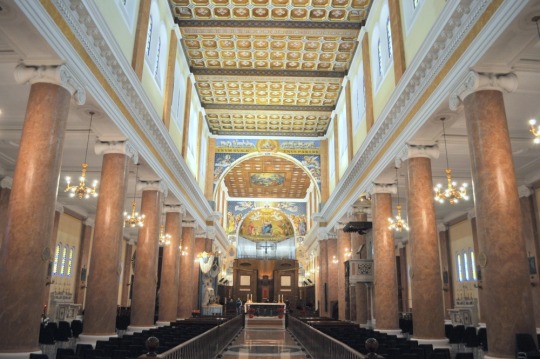

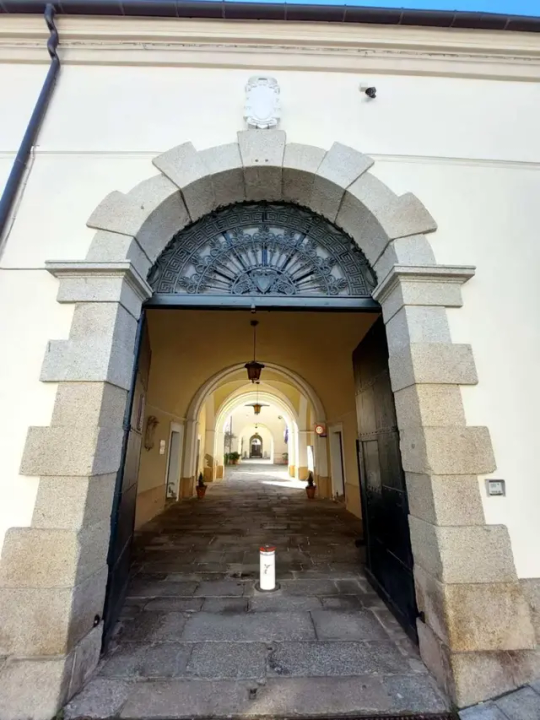



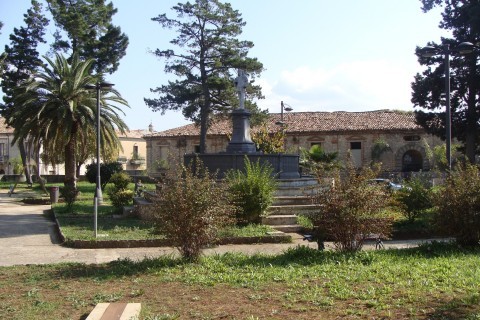
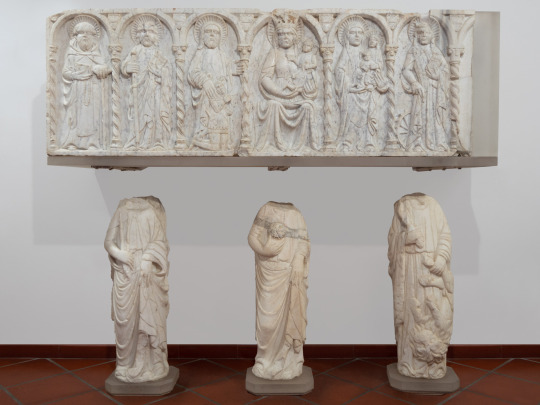

Mileto, Calabria, Italy
According to tradition, the city was founded by Greek fugitives from Miletus (Miletos in Greek; hence the name) in Anatolia, which had been destroyed by Darius.
Mileto was a Norman stronghold under Roger I of Sicily, the last great leader of the Norman conquest of southern Italy. He died here in 1101. Roger's son, Simon, Count of Sicily, died in the town in 1105, when he was 12 years old.
Simon's brother and successor Roger II was born here in 1095. He began his rule as Count of Sicily in 1105 and later became Duke of Apulia and Calabria in 1127. He became the first King of Sicily in 1130.
In 1807 it was the location of the Battle of Mileto between the French and Neapolitan armies.
The Museum of Mileto wxhibits an important art collection, set on two floors, with works dating from the late Imperial period to the 19th Century. The rooms on the ground floor show roman materials as well as medieval artefacts . Fragments of stained glass and capitals of Norman art (11th-12th Century) are of particular interest. The first room on the upper floor is dedicated to the monumental sarcophaguses of Roger and Giovanna D’Aquino. The other rooms on the first floor are dedicated to a rich section of Holy Art. It is possible to admire silk clerical garments, many silver artefacts, an ivory crucifix by Alessandro Algardi, a famous 17th Century sculptor, and some devotional paintings.
Follow us on Instagram, @calabria_mediterranea
#mileto#calabria#italy#italia#south italy#southern italy#italian#mediterranean#architecture#ruins#history#silk#europe#museum#art#sculptures#sculpture#ancient art
29 notes
·
View notes
Text
"No hay diferencia entre la vida y la muerte. ‘¿Entonces por qué no te mueres?’, le preguntó uno. ‘Porque no hay diferencia’, respondió”
Tales de Mileto
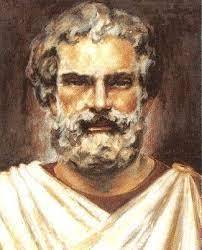
Fue un filósofo, matemático, geómetra, físico y legislador griego, nacido en Mileto, una antigua ciudad griega localizada cerca de la desembocadura del rio Menderes en la antigua Caria (hoy Turquía) en el año 624 a.C.
Aristóteles lo consideró como el iniciador de la escuela de Mileto, cuyos miembros fueron Tales, Anaximandro y Anaxímenes.
Tales es reconocido por romper con el uso de la mitología para explicar el mundo y el universo, cambiándolas por explicaciones naturales mediante teorías e hipótesis naturalistas, por lo que se le considera como el iniciador de la especulación científica, y filosófica griega. Por lo anterior, se le considera el primer filósofo de Occidente.
No se conserva ningún texto suyo, sin embargo se le atribuyen importantes aportaciones en el terreno de la filosofía, la matemática, la astronomía y la física, y los datos biográficos son una mezcla de opiniones, y de hechos atribuidos a su persona, recogidas de diferentes autores muchos años después de su muerte.
De lo poco que se sabe, es que sus padres eran oriundos de Fenicia, y se cree que en alguna etapa de su vida, Tales haya recibido enseñanzas de sacerdotes egipcios, así como conocimientos matemáticos que estos habían desarrollado a un nivel práctico. Ya que los jonios, de donde provenía, comerciaban frecuentemente con Egipto y Babilonia.
Se cuentan múltiples anécdotas de la vida de Tales, y sobresalen cuando predijo una prospera cosecha de aceitunas y que anticipándose a este hecho, compró una gran cantidad de prensas de aceite en invierno, mismas que alquiló en la época de recolección, con lo que acumuló una gran fortuna (Política de Aristoteles). Por su parte Herodoto, cuenta una anécdota de Tales en donde en medio de una batalla, predijo un eclipse solar y llevó a los contendientes a detenerse y llegar a un acuerdo de paz por miedo a que el evento se tratara de una advertencia divina.
También es muy conocida la leyenda de su método de comparación de sombras que habría utilizado para medir la altura de las pirámides egipcias.
Apolodoro, el filósofo epicúreo en sus Crónicas, afirma que Tales murió a la edad de setenta y ocho años en Mileto, y otros filósofos afirman que fue a la edad de noventa años.
Fuente Wikipedia.
#grecia#tales de mileto#filosofia#filosofos#citas de reflexion#frases de reflexion#notasfilosoficas#grecia antigua
7 notes
·
View notes
Text
'got me running from the daylight' -> 'romanticise a dark city, you can't find the light in the sun'
every time i try to study i end up distracted by lyric parallels that relate to my work
#which in this case is on grid layouts in cities#did you know hippodamus of mileto would agree with you luke? i didn't think so#sorry my brain is being awful there might be more of these coming#luke hemmings#close my eyes#boy ep#daylight#5 seconds of summer
2 notes
·
View notes
Text
"Anaxímenes de Mileto, pensador griego del siglo VI a.C., desarrolló el antiguo concepto de que la respiración era el espíritu de la vida, pensando que el aire es el elemento fundamental de la tierra: «Lo mismo que el alma, que es aire, mantiene unido al cuerpo, el viento y el aire envuelven el mundo entero.» El resto de los elementos, afirmaba Anaxímenes, provienen del aire densificado o enrarecido."
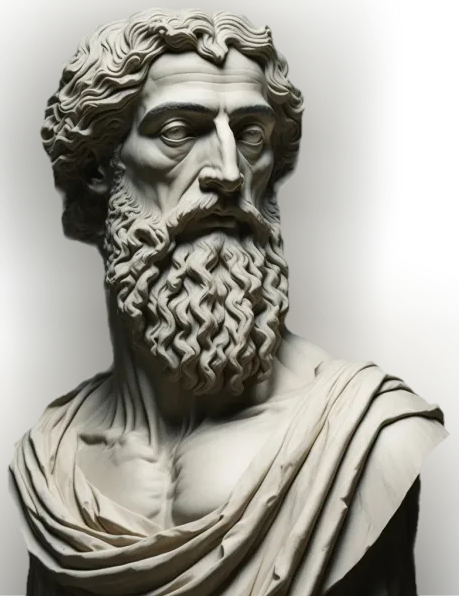
- Atlas Argentino.
3 notes
·
View notes
Text
Appunti su Anassimene, antico filosofo presocratico greco
Autore ignoto – Anassimene di Mileto, filosofo presocratico – Wikipedia, pubblico dominio
Anassimene o Anassìmene (Mileto, 586 a.C. circa – 528 a.C.) è stato un filosofo greco antico.
I dettagli della sua vita sono pressoché sconosciuti perché nessuna delle sue opere è stata preservata.
Le idee di Anassimene sono conosciute solo oggi a causa dei commenti su di lui fatti da scrittori successivi,…

View On WordPress
0 notes
Text
Tales de Mileto: A água é o princípio de todas as coisas
No século VI a.C., Tales de Mileto, tido como o primeiro filósofo, desafiou as explicações míticas e mitológicas que permeavam a compreensão do universo. Nesse contexto, a água, que a princípio pode parecer uma escolha surpreendente, revela-se uma escolha notável quando exploramos as nuances do pensamento talesiano.
A água, para Tales, não era apenas um elemento comum, mas um princípio dinâmico…
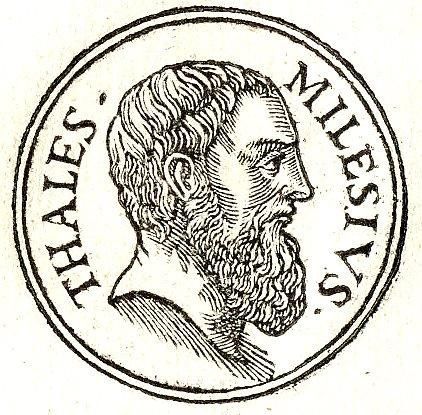
View On WordPress
#arché#água#filosofia#filosofia antiga#grecia antiga#historia da filosofia#Pré-socráticos#tales de mileto
0 notes
Text
"Allting är fullt av gudar", är ett yttrande som påstås ha fällts av Thales från Miletos, den förste av de grekiska s.k. naturfilosoferna ... Men Thales är också känd för att ha hävdat att vattnet är alltings grund. I den processen inbegrips inte några gudar. ... Påstår man att "allting är fullt av gudar" upphäver man kontrasten mellan det gudomliga och det icke-gudomliga. Det icke-gudomliga får del av den kraft som vanligen förbehålls gudarna. Allting består av krafter.
Ronny Ambjörnsson, Europas idéhistoria. Antiken, Människors undran
#ronny ambjörnsson#europas idéhistoria#människors undran#facklitteratur#naturfilosofi#filosofi#idéhistoria#mystik#thales från miletos
0 notes
Text
La filosofía griega: un legado que perdura en la actualidad
"Descubre cómo la filosofía griega, una de las tradiciones más influyentes de la historia, continúa moldeando nuestra comprensión del mundo y nuestro lugar en él. ¡Lee este artículo y descubre su legado duradero en la cultura occidental!
La filosofía griega es uno de los pilares fundamentales de la cultura occidental. Desde sus inicios en el siglo VI a.C., la filosofía griega ha influido en la forma en que los seres humanos comprendemos el mundo y nuestro lugar en él. Esta tradición filosófica ha perdurado a lo largo de los siglos, y sus enseñanzas continúan siendo relevantes en la actualidad.
Los filósofos griegos se…
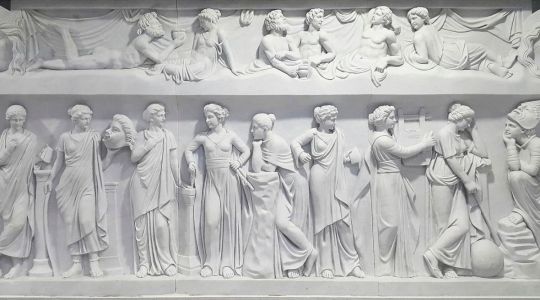
View On WordPress
0 notes
Text

The Story Of Natuzza Evolo: Calabrian Mystic
Natuzza was a Calabrian mystic who acted as a medium and healer, showed evidence of stigmata, and could “bi-locate” — be in two different places at once. She is also connected with “hemography,” which is when blood stains miraculously transform into symbols, shapes, and even words, particularly Christian ones like crosses.
Natuzza was born in 1924 in Paravati, a tiny hamlet near Mileto in Calabria. Her given name is Fortunata, from which the diminutive “Natuzza” comes. Natuzza’s father had left for Argentina a few months before she was born, and he never returned, leaving Natuzza’s mother alone to care for her newborn as well as her other children.

Natuzza never learned to read or write and helped support her mother and siblings by working for local families. She allegedly began having her first visions as a small child — Jesus, it is said, appeared to her as a boy who played with her and one of her brothers — but her brushes with the dead didn’t become popular knowledge around town until she began experiencing them as a young teen at work.

And it wasn’t just apparitions with Natuzza, even as a child. At her First Holy Communion, her mouth reportedly filled with blood when the wafer symbolizing the body of Christ was placed inside. At her Confirmation, a large stain of blood in the form of a cross formed on the back of her shirt.
Because of Natuzza’s experiences with the paranormal, as a young woman she was closed in an asylum with a diagnosis of "hysterical syndrome" for a few months by the local priest and was not permitted to enter a convent to become a nun.

Natuzza became known for the appearance on her body of blood-coloured images and words around the time of Easter and these caused her great psychological and physical pain. Some of the words were found to be Hebrew and Aramaic which was strange because she could not read or write, even in her native Italian. For decades devout Catholics from Calabria, then the rest of Italy and other parts of the world, began coming to her to ask for advice and prayers and to ask her for information about the souls of their relatives.

In addition to seeing Jesus, Natuzza also claimed to have also seen and communicated with the Virgin Mary, angels, and the dead, particularly souls in purgatory, throughout her life.
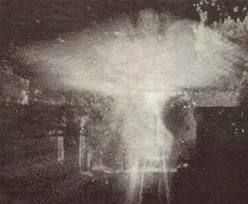
Natuzza was also considered a healer, credited with being able to look at a person and tell them what was ailing them, physically — using formal, medical terminology — as well as suggest treatments. She could also see the future and sometimes spoke in languages she didn’t know (remember, again, she was illiterate). In fact, some of her blood stains even transformed into phrases in foreign languages.

However, Natuzza never accepted money for what she did or was accused of participating in anything fraudulent based on her abilities, which, in the eyes and hearts of many, lend credence to her and her followers’ claims.
"It's a question of removing the suggestive religious context from the event. It doesn't allow rational reading since it cloaks it in mythology and unprovable hypotheses," says the Italian Committee for the Checking of Pseudoscientific Claims, or CICAP.

The group believes the so-called stigmata cases are really examples of Gardner-Diamond syndrome, "a skin condition that, although rare, is well documented in medical literature." The syndrome gives rise to a series of periodic, painful and bleeding bruises of unclear origin, combined with psychiatric disorders such as self-harm.

Although she’s relatively unknown internationally, Italians have been fascinated by Natuzza for generations as she has been a popular subject of books and various Italian television programs.
After Natuzza passed away on All Saints’ Day in 2009, about 30,000 people traveled from all over Italy and beyond for her funeral in rural Calabria. One-hundred priests and six Italian bishops were also in attendance.
Follow us on Instagram, @calabria_mediterranea
#natuzza#natuzza evolo#mystery#calabria#italy#italia#south italy#southern italy#mileto#paravati#stigmata#apparition#blood#paranormal#visions#bilocation#catholic#catholicism#religion#marian apparitions#virgin mary#holy mary#jesus christ#jesus#pseudoscience#christianity#christianism#italian#roman catholic#roman catholic church
13 notes
·
View notes
Note
Hey, I loved your reasoning for liking Dimaggio, Lord dimaggio is a funny name was great reasoning from you!
lol
he really is a Lord - as if Verdane's bandits have a system of nobility.
They don't even have holy blood or crests :(
#anon#replies#jugdral nonsense#fandom woes#I can't wait to see people try to fit the 'crest/HB created a nobility system'#TFW Miletos and Verdane have nobility without having a system based on#concentration of lizard blood in your body
1 note
·
View note
Quote
Las mayores heridas, no las provocan armas.
Dheformer Galinier.
0 notes
Text
La cosa más difícil es conocernos a nosotros mismos; la cosa más fácil, hablar mal de los demás.
-Tales de Mileto-
318 notes
·
View notes
Text

Roman statue of Apollo from Miletus, modern-day Turkey
Miletus is traditionally believed to have been founded by Cretan colonists from Miletos in southwest Anatolia somewhere before 1400 BCE. The site passed into Mycenaean, Carian, and Roman control.
This statue is from the Roman era, dating back to the 2nd century CE when Miletus was a flourishing free city.
Photo source: 🏺
131 notes
·
View notes
Text
The Demonic References in the Loptr Church
Befitting the cult of the dark god Loptous, many members of the Loptr Church, particularly those in Chapters 10 and Endgame of Fire Emblem: Genealogy of the Holy War take their names from grimoires of demonology and the occult.
Beginning with the sect's archbishop, Manfroy (JP: マンフロイ; rōmaji: manfuroi) gets his name from legends regarding Manfred of Sicily, son of Emperor Frederick II. On page 436 of Jacques Collin de Plancy's Dictionnaire Infernal is a section dedicated to Mainfroi, which claims that following his excommunication by Pope Innocent IV, Manfred studied magic and alchemy, all while communing with demons. This was largely based on a similar passage on page 303 of Pierre Le Loyer's Histoire des spectres et apparitions des esprits, which instead refers to Manfred as Manfroy. Rumors of King Manfred's deal with the devil would go on to inspire Lord Byron's Manfred, a poem telling of a noble convening with dark spirits to erase his memory of a lost lover - a sentiment based on his own failed marriage and an affair with his half-sister Augusta Leigh. The wiping of memories seemingly influenced Manfroy's act of erasing those of Deirdre, while the topic of incest likely served as a basis for the conception of Loptous' vessel.
Moving on, Zagam (JP: ザガム; rōmaji: zagamu) is the Loptrian stationed over Miletos Castle. He is named after Zagam, attested on page 711 of Dictionnaire Infernal as a Great King and President of Hell, sourced from Johann Weyer's Pseudomonarchia Daemonum, where he is instead called Zagan. The name Zagan would also be used in the later-released Ars Goetia, part of the Lesser Key of Solomon. Most mentions of Zagan claim that he could turn wine or oil into blood, and could transmute water into wine and vice versa.
Juphiel (JP: ユフィール; rōmaji: yufīru) is a Loptrian bishop defending Edda dukedom. His name comes from Uphir, a demon seemingly first mentioned in Dictionnaire Infernal on page 674. He is said to be a chemist who maintains the health of Beelzebub and the other high-ranked demons of Hell.
Dagon (JP: ダゴン; rōmaji: dagon) is a Loptrian bishop that protects Dozel Castle. His name comes from Dagon, described in Dictionnaire Infernal on page 194. But before this, Dagon, also called Dagan, was an ancient Syrian god of prosperity, kingship, and the father of many other gods. Dagan was also said to guarantee a successful grain harvest. First attestations of Dagon as a demonic entity began with the texts of the Old Testament, which claimed the Philistines to have worshiped the god above all others. De Plancy would expand Dagon's role among other demons, interpreting him to be the Great Baker of Hell - likely based on his association with grain.
Lastly is Baran (JP: バラン; rōmaji: baran), who serves to stop Seliph's army at Friege. He is named after Balan, covered on pages 76 and 77 of Dictionnaire Infernal. In other texts like the Ars Goetia, he is instead called Balam or Balaam. He is said to be a three-headed demon who responds to questions with perfect answers, whether it be about the past, present, or future. The name Balaam comes from a magician in the Old Testament, who told the Moabite king Balak how to make the Israelites sin, leading to punishment upon them by God.
Saving the most speculative for last, Veld is a high-stationed bishop of the Loptr Church who carries out Manfroy's orders throughout the Munster District. The name seemingly comes from the Old Norse veld, appropriately meaning "I rule over; I am the cause of".
In Japanese, Veld's name is written ベルド (rōmaji: berudo). It is possible that the name is a greatly truncated form of ベルゼビュート (rōmaji: beruzebyūto), Belzébuth, a French name for the Lord of the Flies, Beelzebub. Similarly to Dagon, some of the earliest mentions of Beelzebub come from the Old Testament, where he was a god of the Philistines. The Testament of Solomon would go on to assert that this was but another name for Lucifer. Other sources interpret the two as separate, however. On pages 89 and 90 of Dictionnaire Infernal, Belzébuth is claimed to be the prince of demons, the absolute leader of Hell, and second in power and wickedness only to Satan himself. For "Manfroy's Rock" and seemingly the second most powerful member of the Loptrian Order behind the archbishop to be named after Beelzebub would be rather appropriate, though the connection is certainly a stretch.
23 notes
·
View notes